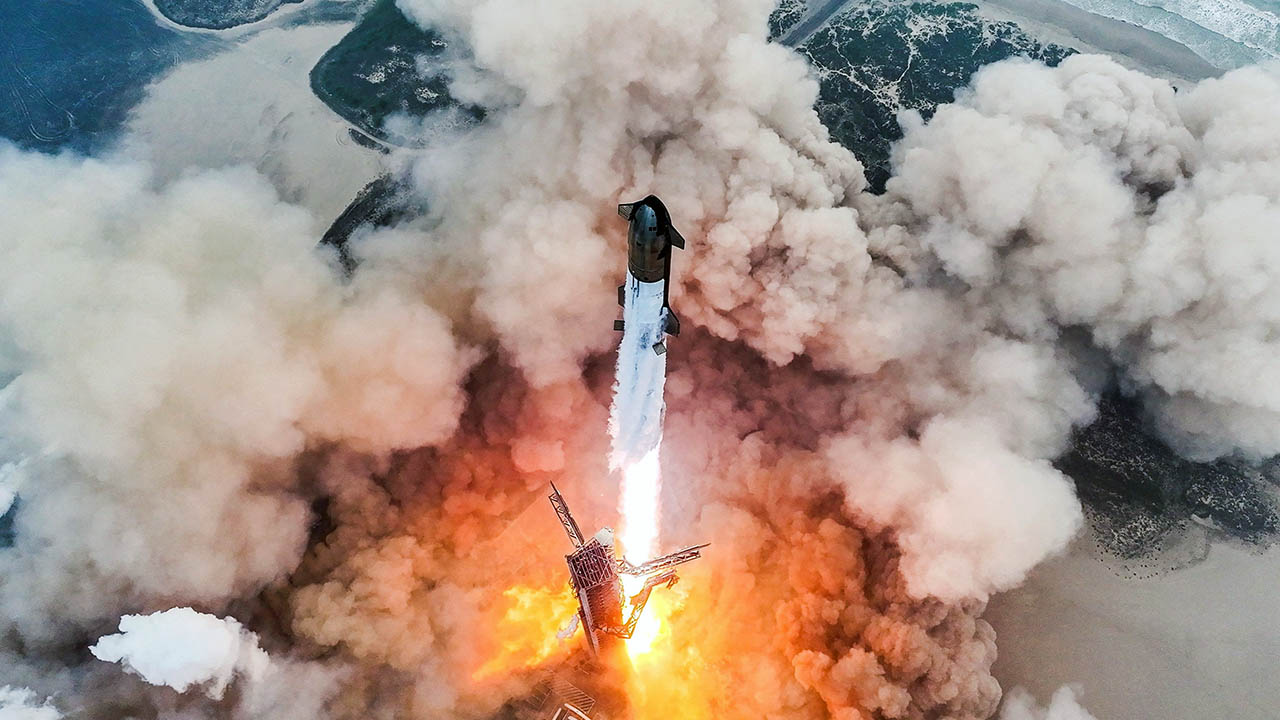
SpaceX’s Starship Flight 8 Ends in Explosion, Echoing Previous Setbacks
On March 6th, SpaceX conducted the highly anticipated eighth test flight of its colossal Starship rocket, a pivotal step in the company’s ambitious mission to develop a fully reusable spacecraft capable of reaching Mars and beyond. While the first stage of the launch, involving the Super Heavy booster, achieved a significant milestone with a successful return and "chopstick" capture, the second stage, the Starship module itself, encountered critical malfunctions that ultimately led to its destruction. The event underscores the formidable engineering challenges inherent in pushing the boundaries of space exploration and the iterative nature of SpaceX’s development process.
The launch occurred at 02:30 Turkish time from SpaceX’s Starbase facility in Boca Chica, Texas. The initial phase of the flight unfolded as planned. The Super Heavy booster, powered by its array of Raptor engines, propelled the Starship skyward with tremendous force. Approximately three minutes into the flight, the Super Heavy booster successfully separated from the Starship module, initiating its controlled descent back to Earth.
In a remarkable feat of engineering, the Super Heavy booster executed a precise return trajectory and was successfully captured by the "chopstick" arms of the launch tower. This successful capture represented a major accomplishment for SpaceX, demonstrating the viability of their innovative approach to booster recovery and reuse. The "chopstick" system, designed to snag the descending booster with robotic arms, aims to minimize landing infrastructure requirements and accelerate turnaround times for future launches. This successful landing was a tangible demonstration of advancements made since previous flights.
However, the success of the Super Heavy’s return was overshadowed by the subsequent difficulties encountered by the Starship module. Following separation from the booster, the Starship was intended to proceed into a controlled ascent, ultimately aiming to reach a specific orbit before releasing dummy Starlink satellites as part of the test objectives. Unfortunately, this phase of the flight deviated significantly from the planned trajectory.
Reports indicate that the Starship module experienced critical malfunctions in its Raptor engines shortly after separation. Some of the six engines failed, leading to a loss of control. Without stable propulsion, the vehicle began to spin erratically, entering a dangerous uncontrolled somersault. These engine failures highlight the complexity of managing the powerful Raptor engines, which use liquid methane and liquid oxygen as propellants, at extreme temperatures.
Communication with the Starship module was completely lost approximately nine minutes into the flight, suggesting a catastrophic failure. Soon after, observers witnessed debris from the Starship plummeting into the ocean in the skies over the Bahamas, confirming the vehicle’s destruction.
The outcome of Flight 8 bears a striking resemblance to the "Flight 7" mission conducted in January. In that earlier test, the Super Heavy booster also achieved a successful capture, but the Starship module similarly failed to reach its target due to engine failures, leading to its eventual destruction. The parallels between the two flights emphasize the recurring challenges SpaceX faces in achieving reliable performance from the Starship module.
In the wake of the Flight 8 anomaly, SpaceX officials have reiterated their commitment to thoroughly investigate the cause of the engine malfunctions and implement corrective measures. During the company’s live broadcast of the launch, spokesperson Dan Huot emphasized the importance of learning from each flight, regardless of the outcome. "There is a lot we need to examine and investigate on this flight," Huot stated. "There is more information we need to learn about Starship, and we will continue to work to solve these problems." The company’s approach to quickly test, learn and iterate is vital to its developmental process.
The January accident, Flight 7, was attributed to stronger-than-expected vibrations and excessive stress within the engine system, which led to fuel leaks. Prior to Flight 8, SpaceX implemented several modifications designed to address these issues. These modifications included alterations to the fuel supply lines, adjustments to the operating temperatures of the propellant, and the addition of a new nitrogen gas purge system. The changes were intended to improve the reliability and robustness of the engine system.
Despite these improvements, the challenges encountered during Flight 8 demonstrate that further refinements are necessary to ensure the Starship module can achieve consistent and reliable performance. The data collected during the flight, even in its final moments, will be invaluable in understanding the root cause of the engine failures and guiding future design changes.
SpaceX remains steadfast in its long-term goal of developing Starship into a fully reusable spacecraft. A key element of this vision is the ability to capture both the Super Heavy booster and the Starship module using the "chopstick" arms of the launch tower. This capability would significantly reduce the cost and turnaround time for future launches, making space travel more accessible and sustainable.
Under the leadership of Elon Musk, SpaceX intends to continue its rapid pace of test flights, undeterred by the setbacks encountered during Flights 7 and 8. The company’s unwavering commitment to innovation and its willingness to learn from failures are essential ingredients in its quest to make Starship a vehicle capable of carrying humans to Mars and opening up new frontiers in space exploration. Each flight, even those ending in an explosion, provides valuable data and experience that will ultimately contribute to the realization of this ambitious goal. The company’s continual investment in research and development proves their dedication to space travel.
